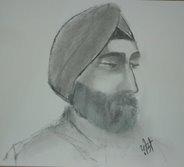CES 2007: Future of TV HDTVHDTV took-off in the US in 2006. The momentum will continue in 2007. There were hundreds of HDTVs on display at the show - Plasma, LCD and DLP. Prices are falling and TVs are getting bigger and bigger. Very hard to resist. Sharp had the biggest LCD TV at enormous 108". WOW! Also saw a 120" plasma TV. 1080p is standard. There were DVD players, cameras and projectors to match!
Blu-ray or HD DVD? LG had a player that plays both standards (They were distributing copies of Newsweek wrapped with an ad for the player!). Also, I hear (not confirmed) that studios are getting ready to release disks with movies in both standards, one on each side. The existence of two standards war will not hold HDTV back as we experienced with the competing VCR standards.
IPTVSome of the infrastructure enhancements that bring IPTV closer to reality are falling in place. AT&T and Verizon are aggressively deploying fiber-to-the-home. WiMAX will start rolling out in the next 12 to 18 months. Sprint has made a significant commitment on the technology. So, bandwidth will no longer be an issue.
Apple and others have announced products to deliver IPTV on the television sets. SONY launched a service
BARAVIA Internet Video Link to deliver IPTV directly to the TV over an ethernet connection. The service, for now, is free. However, I think if they want to deliver real content that users want to watch on a large HDTV, they will have to charge.
Broadcast TV on Mobile devicesTelcos and mobile handset manufacturers are finally looking to deliver live TV on mobile devices. Verizon with Mediaflow and Cingular with MobiTV have launched services that are available now. The feed is delayed by a few seconds. Motorola had demo products using the DVB-H standard. My friend Doug Neal tells me that this service was available in Korea several years ago.
Look into the futureA few interesting next-gen products I saw at the show:
Slingmedia is adding time-shift (TiVo-like) features to it's wildly popular location shift (watch your home TV remotely) product.
3DTV: LG, Hitachi and others had displays that presented picture in 3d without requiring any glasses.
Social TV: Chat with others watching the same TV show
Eyespot: Create and share new videos by mashing up videos and music on the web



